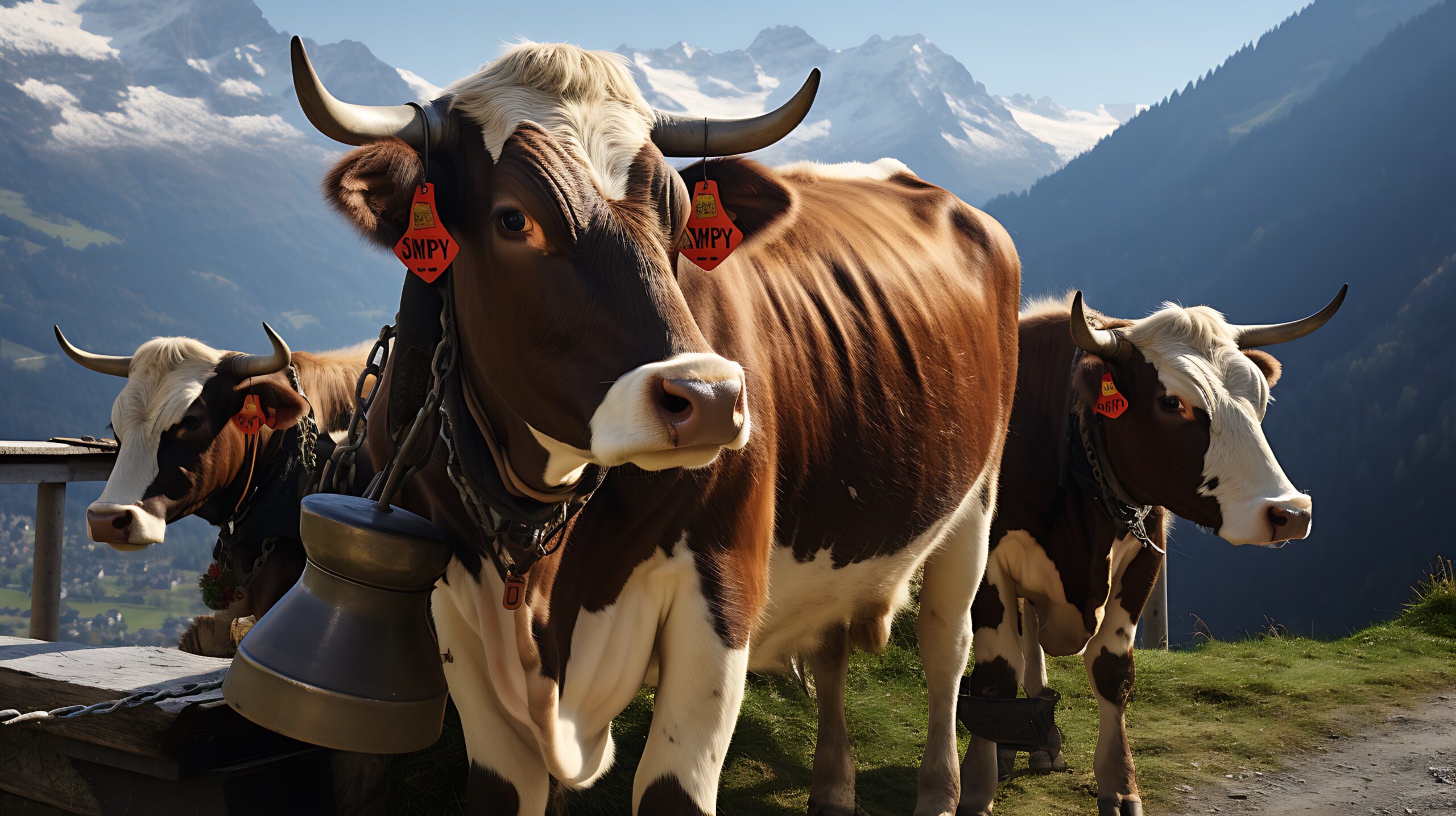Swiss cowbells: The Melodic Chimes of Swiss Cows

Ah, Switzerland! A land of chocolates, watches, and… cowbells? Indeed. As anyone who has taken a leisurely hike through the Swiss Alps can attest, the melodious clinking of the cowbell is as iconic as the backdrop of snow-covered peaks and lush green meadows. Today, we embark on a journey through the winding paths of history, culture, and (yes) cow pastures, to unveil the mystique of the Swiss cowbell.

But why are Swiss cowbells so big? For starters, these aren’t your run-of-the-mill, cutesy jingle bells. Swiss cowbells are grand, robust, and often astonishing in size. Their large form is not just for show; a bigger bell emits a deeper and more resonant tone. In the vast expanses of the Alps, these distinct sounds help farmers locate their cattle with ease.
A Craft of Metal and Tradition
Swiss cowbells are traditionally made from bronze, an alloy consisting of about 80% copper and 20% tin. The exact recipe for the bronze alloy used in Swiss cowbells is a closely guarded secret that has been passed down through generations of bell makers. The alloy produces a distinctive sound quality that is characteristic of Swiss cowbells.
The process for crafting the bells also follows traditional methods that have been honed over centuries. The bells are cast in sand molds using a lost-wax casting technique. The decorations and engravings on the bells are done by hand.
Swiss cowbells are produced by only a handful of artisanal workshops that still practice these time-honored techniques. The craftsmanship and material quality results in cowbells that can last for decades or even centuries.
While cheaper cowbells made from other metals or manufacturing methods are available, aficionados seek out authentic Swiss cowbells made the traditional way from bronze. The heritage, sound, and longevity make these bells highly prized.
Cow bells are a matter of pride for farmers. Favorite cows often wear large, ornately decorated bells. The bells can be engraved with significant dates, family events, or religious motifs.
A Cow Bell Rings Through History
The origins of the Swiss cowbell trace back centuries. As Alpine farmers moved their cattle between high and low pastures, they needed a reliable means to track them. The cowbell, with its resonant ring, provided just that. Over time, it evolved, not just in form but in significance, integrating itself into Swiss folklore and culture.
Cow bells have been a tradition in Switzerland for over 900 years. They are an iconic symbol of Swiss farming culture.
Swiss Cowbells: A Tradition, A Culture, A Melody
Beyond their practical purpose of helping locate cattle, Swiss cowbells hold deep cultural significance. They’re central in Swiss festivals, yodeling competitions, and, quite notably, in the iconic ‘Alpsegen’ – an alpine tradition where blessings are sung to the tune of cowbell rings.
Cow bells serve an important practical purpose because they allow farmers to locate their cows when they are grazing freely on large alpine pastures or meadows. The bells help the farmers find their cows, especially when visibility is poor due to fog, nighttime, or the cows being hidden behind terrain.
Each bell has a unique tone and pitch that identifies the individual cow. The larger, deeper-sounding bells are worn by dominant herd animals. Smaller, higher-pitched bells help locate calves or young cows.
So, why the bells on the lovely Swiss cows? It’s a mix of practicality and tradition. As cows graze freely in the Alps, the bell assists farmers in keeping tabs on them. But more than that, it’s a rite of passage. A cow adorned with a bell is often seen as a mark of pride, showcasing its robust health and vitality.
There are only about six main artisanal cow bell makers left in Switzerland. The bells are handmade and can last for decades. Craftsmanship is highly valued.
The Sound of the Alps
For the Swiss, cowbells are symbolic of their connection with nature, their deep-rooted traditions, and the serene beauty of the Alps. They’re not just cowbells; they’re an echo of the Swiss soul.
If you’ve never heard a Swiss cowbell, you’re in for a treat. It’s not a mere clank but a resonant, melodious chime. A sound that, for many, epitomizes the calm and tranquillity of the Swiss countryside.
If you hear the sound of bells in Switzerland it means that there are cows grazing around the hills, unless there is a church nearby.
Take a Piece of Switzerland Home
For travellers, Swiss cowbells have become beloved souvenirs. They’re not just mementos of a trip, but a slice of Swiss tradition. Whether hung on doorways or displayed on shelves, they serve as a gentle reminder of the Alps’ serene beauty.
While tourists may see the bells as charming souvenirs, stealing them is considered disrespectful to farmers. Cow bells are functional tools, not just decorations. Stolen bells may need to be replaced at great expense.
Given the craftsmanship and cultural importance, Swiss cowbells don’t come cheap. While Swiss cowbell prices vary based on size, material, and intricacy of design, some can fetch hundreds, if not thousands, of Swiss francs. A worthy price for a piece of Swiss heritage.
In wrapping up our jaunty exploration, the Swiss cowbell emerges not merely as an object but as an emblem — of tradition, of history, of the very heartbeat of Switzerland. So, the next time you hear that resonant chime while sipping your Swiss cocoa, know that it’s more than just a sound; it’s the very soul of Switzerland serenading you!